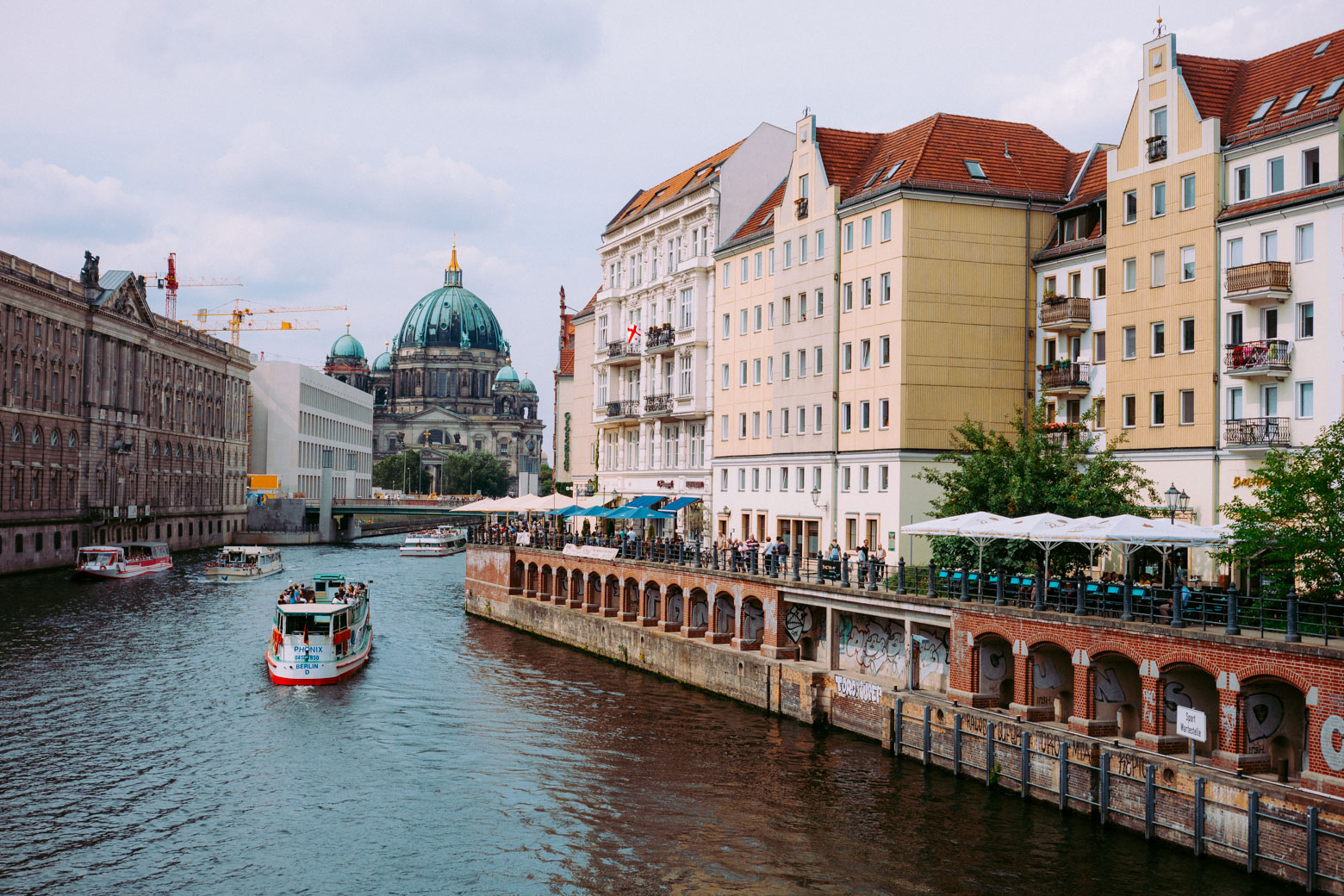 Berlin – Nikolaiviertel
Berlin – Nikolaiviertel
The recently built Nikolaiviertel district is located just southwest of the Rotes Rathaus, imitation of the pre-war center of Berlin. In terms of architecture, it is radically different from the GDR models and is not another monument to the art of concrete making; most of the buildings in Nikolaiviertel do not exceed four or five floors in height and efforts have been made, that the designs have certain features characteristic of the architecture of the former Berlin. The Nikolaiviertel consists in part of exact copies of Berlin monuments, that did not survive the war, such as the inn Zum Nussbaum , partly from stylized buildings not modeled on anything specific, but with a typical "Old Berlin" character, or at least something similar. This method does not always work, because prefabricated columns and gables do not look very convincing. Nevertheless, the Nikolaiviertel is a glorious departure from the monumentalism of East German architecture. It was also an attempt to attract foreign tourists with heavy pouches, because many high-end and expensive shops have opened there, restaurant, cafes and Gaststatten (details again in "Gastronomy").
In the center of the district there is a Gothic church of St.. Nicholas (Nikolai Church), which has been restored to its pre-war beauty; now it houses a museum dedicated to the spatial development of medieval Berlin. Nearby is the Knoblauchhaus, which was built in 1759 year and somehow survived the war. Inside there is a museum dedicated to the Enlightenment in Germany in the 18th century and the figures associated with that era. The rebuilt rococo Ephraim-Palais on Muhlendamm houses another museum showing the spatial development of the city from "the seat of the elector to the great bourgeois city in the nineteenth century". At Muhlendamm 5 houses the Handwerksmuseum (Handicraft Museum, pn. 10.00-17.00, wt., Wed. 9.00-17.00, under., nd. 10.00-18.00), depicting the history of craftsmanship in former Berlin in a way that is a little more interesting than average.
On the southern bank of the Spree (accessible on foot via Fischerinsel) at Am Kollnisches Park there is the Museum of the Marches (Markisches Museum Wed, under. 9.00-18.00, thurs, under. 9.00-17.00, pt. 9.00-16.00), containing historical material on Berlin and the Brandenburg March. The oldest exhibit is a deer head mask from Berlin-Biesdorf, dating from the 7th century BC. and constituting the oldest relic of settlement in the Berlin area. There are also materials on the life and work of Heinrich Zille, a Berlin artist documenting in his critical and satirical drawings the era of the Weimar Republic and focusing attention on poverty experienced by the working class.
A bit further, at Markisches Ufer 16-18, there is the Otto-Nagel-Haus advertised as a collection of proletarian-revolutionary and anti-fascist art, focus around Otto Nagel, a revolutionary painter renowned in artistic circles, who created gloomy works accusing the world of being insensitive to the plight of ordinary people. There are also works by other artists, such as Ernst Bariach, Kathe Kollwitz, Otto Dix, Conrad Felixmuller and Kurt Querner.